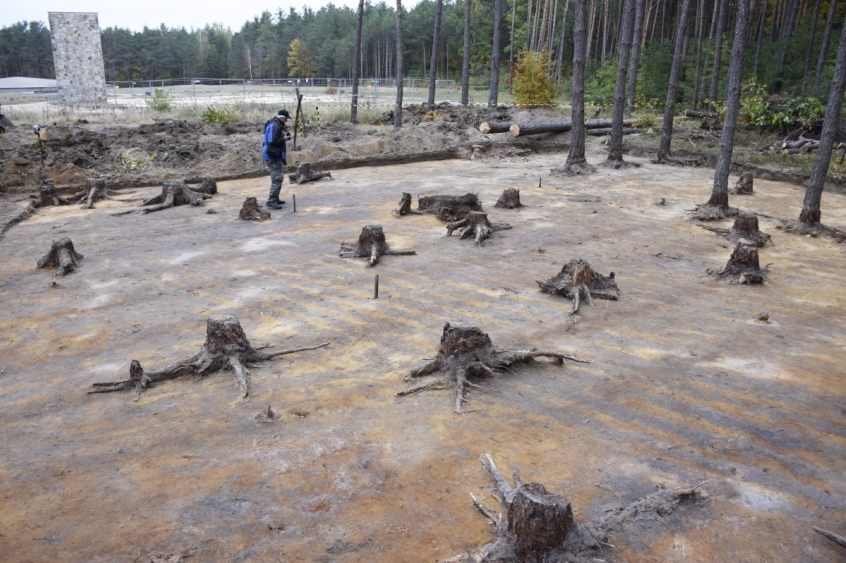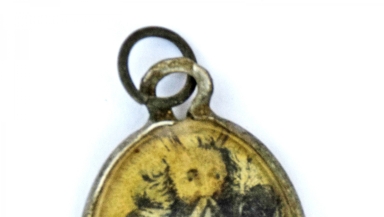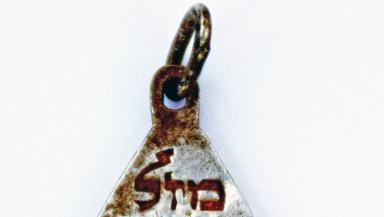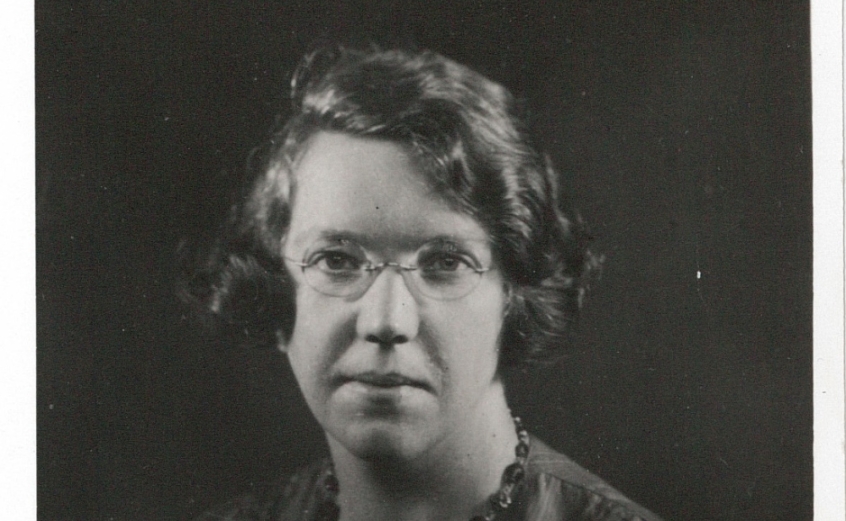
A pendant similar to one owned by Holocaust victim Anne Frank has been unearthed at the site of the former German Nazi extermination camp, Sobibór, which was in occupied Poland.
The pendant bears a date, the words "Mazal Tov" in Hebrew and the city "Frankfurt A.M.". It is similar to only one other known to exist that belonged to Anne Frank, whose diary of her time in hiding in Amsterdam is read the world over.
It has been found along wth jewellery and other items in a part of the camp where victims were forced to undress and have their heads shaved.

This part of the camp was named "Pathway to Heaven", the path along which Jewish victims were forced to tread to the gas chambers.
The personal items were found in the foundations of a building and are thought to have fallen through the floorboards.
They were found by Polish archaeologist Wojciech Mazurek and Yoram Haimi, an archaeologist from the Israel Antiquities Authority, along with their Dutch associate, Ivar Schute.
The dig has been in place since 2007.
It is part of an international project to build a new museum and memorial at Sobibór, in coordination with Yad Vashem's International Institute for Holocaust Research.
The other items included a Star of David necklace, a woman's watch and a metal charm covered in glass with an etching of Moses holding the Ten Commandments.
On the reverse side of the charm is the inscription of the essential Jewish prayer "Shema."
Also found was a unique pendant, probably belonging to a child from Frankfurt who was born on July 3, 1929, which bears the words "Mazal Tov" written in Hebrew on one side and on the other side the Hebrew letter "ה" (God's name) as well as three Stars of David.

The pendant is believed to have belonged to someone called Karoline Cohn.
Dr Joel Zissenwein, Director of the Deportations Database Project, found that Cohn, born on July 3, 1929, was deported from Frankfurt to Minsk on November 11, 1941.
It is not known if Cohn survived the harsh conditions in the Minsk ghetto. In September 1943, the ghetto was liquidated and the 2,000 Jewish prisoners interned there were deported to the death camp.
Both Anne Frank and Karoline Cohn were born in Frankfurt, suggesting a possible connection between them. Researchers are currently trying to locate relatives of the two families to further explore this avenue.
Professor Havi Dreifuss, Head of the Center for the Research on the Holocaust in Poland at Yad Vashem's International Institute for Holocaust Research, said: "These recent findings from the excavations at Sobibór constitute an important contribution to the documentation and commemoration of the Holocaust, and help us to better understand what happened at Sobibór, both in terms of the camp's function and also from the point of view of the victims."
Israel Antiquities Authority archaeologist Yoram Haimi said: "In spite of attempts by the Nazis and their collaborators to erase traces of their crimes, as well as the effects of forestation and time, we enhance our understanding of the history previously known to us only through survivor testimonies. In this way, we ensure that the memory of the people killed there will never be forgotten.
"This pendant demonstrates once again the importance of archaeological research of former Nazi death camp sites. The moving story of Karoline Cohn is symbolic of the shared fate of the Jews murdered in the camp. It is important to tell the story, so that we never forget."
In another moving story, television's Antiques Roadshow last night revealed of a long lost ring that belonged to a brave Scot who died in Auschwitz.
Jane Haining's jewellery was analysed by expert John Benjamin for a special episode of the iconic BBC One flagship programme to mark Holocaust Memorial Day on 27 January.

He shared with her two nieces, Deirdre McDowell and Jane McIvor, his view on the ring, recently returned to the Church of Scotland offices in Edinburgh.
Haining was arrested by the Nazis in 1944 for looking after Jewish girls at the Kirk-run Scottish Mission School in Budapest, Hungary.
She repeatedly refused orders from the Church to return home after the Second World War broke out because "her" girls needed her in days of "darkness".
For four years Haining, who grew up in Dunscore near Dumfries, protected the pupils from the emerging threat of the Final Solution. She was betrayed by the school cook's son-in-law whom she caught stealing scarce food.













